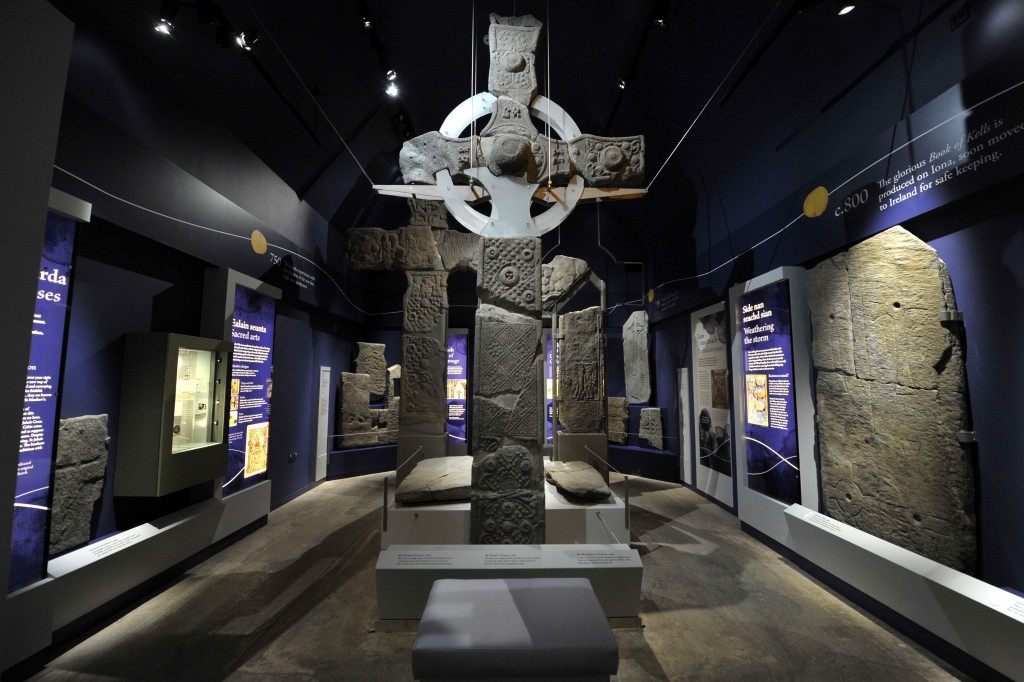Earlier this year, my colleagues from the collections team and I travelled to Iona to do some essential conservation work at the museum.
Many of the beautiful items you can see at the museum are fragile and need to be kept in carefully controlled conditions. To achieve that, we have several tricks on hand:
-
-
ProSorb is similar to the silica gel you often find in bags and suitcases. The beads absorb moisture when the air inside the cases gets too humid – which is important as Iona is by the coast so it’s always quite humid. We change the ProSorb in the display cases roughly 3 times a year. The used beads are taken back to Edinburgh and heated up to dry out the excess moisture, after which they can be used again.
-
2. Data loggers: Inside each case is a ‘data logger’ that records the temperature and humidity inside the cases every half an hour. Each month, the site staff download the data and send it to the Collections Unit, who analyse it to check that the environmental conditions are stable.
-
-
As we had to empty the display cases to remove the base boards, it gave us a great opportunity to have a close-up look at the objects in the cases and check their condition. Many of the objects are fragile so removing them from the cases is a slow and careful process.
-
We also carried out a condition check of all of the stones on open display in the museum. This involved us looking at each stone in detail and making a note of any signs of deterioration or areas of concern.
-
4. New baseboards: The base boards in the display cases that the objects and mounts sit on have small perforations in them. This is to allow an air flow between the ProSorb drawer and display area. We’re having new baseboards with larger holes made to encourage a greater air flow, which will hopefully help us maintain and improve relative humidity levels in the cases.
-
5. Cleaning: Opening the cases also gave us a good opportunity to clean the inside of the glass door.
Have you been to the museum? What did you think?









